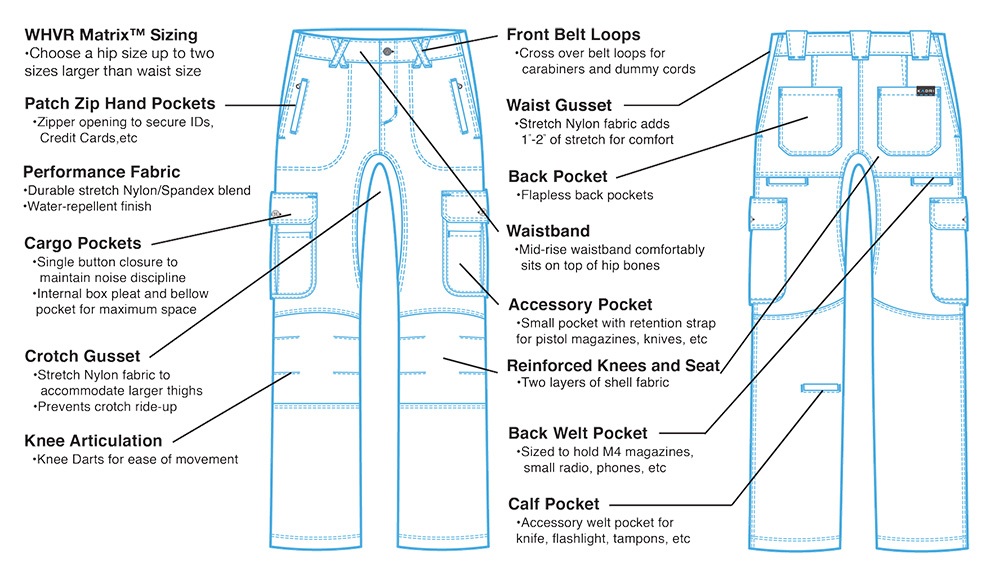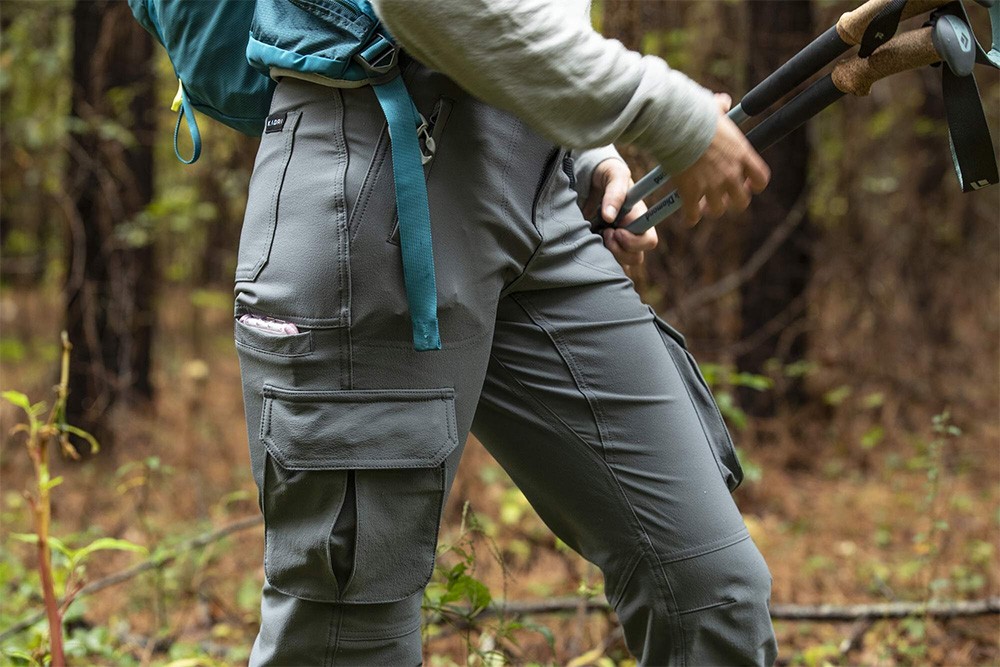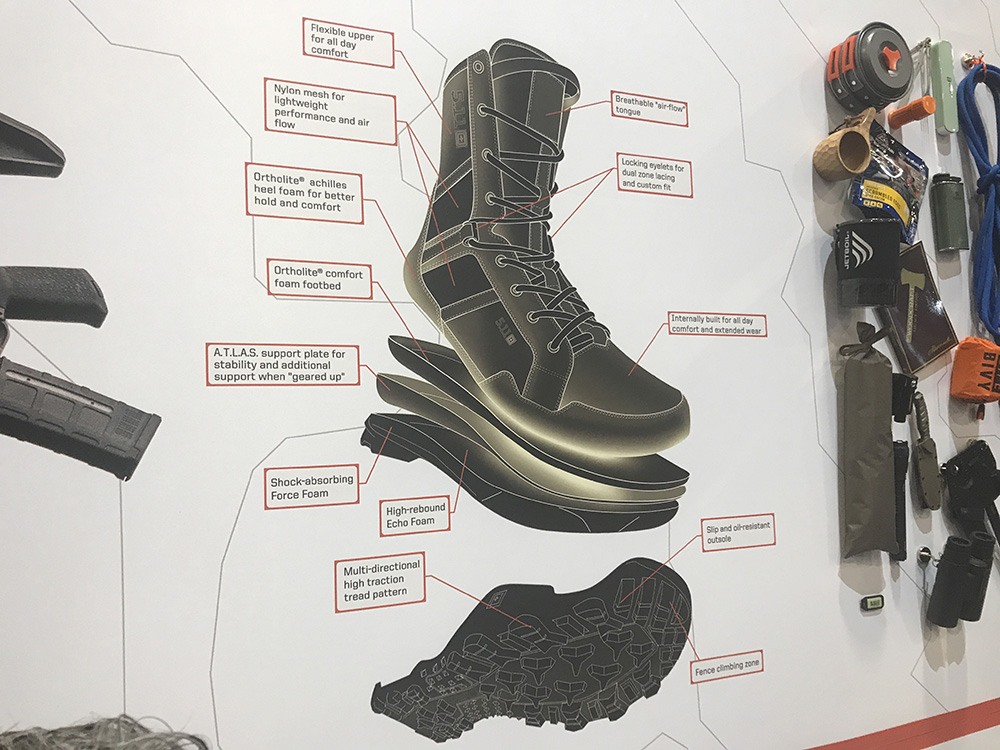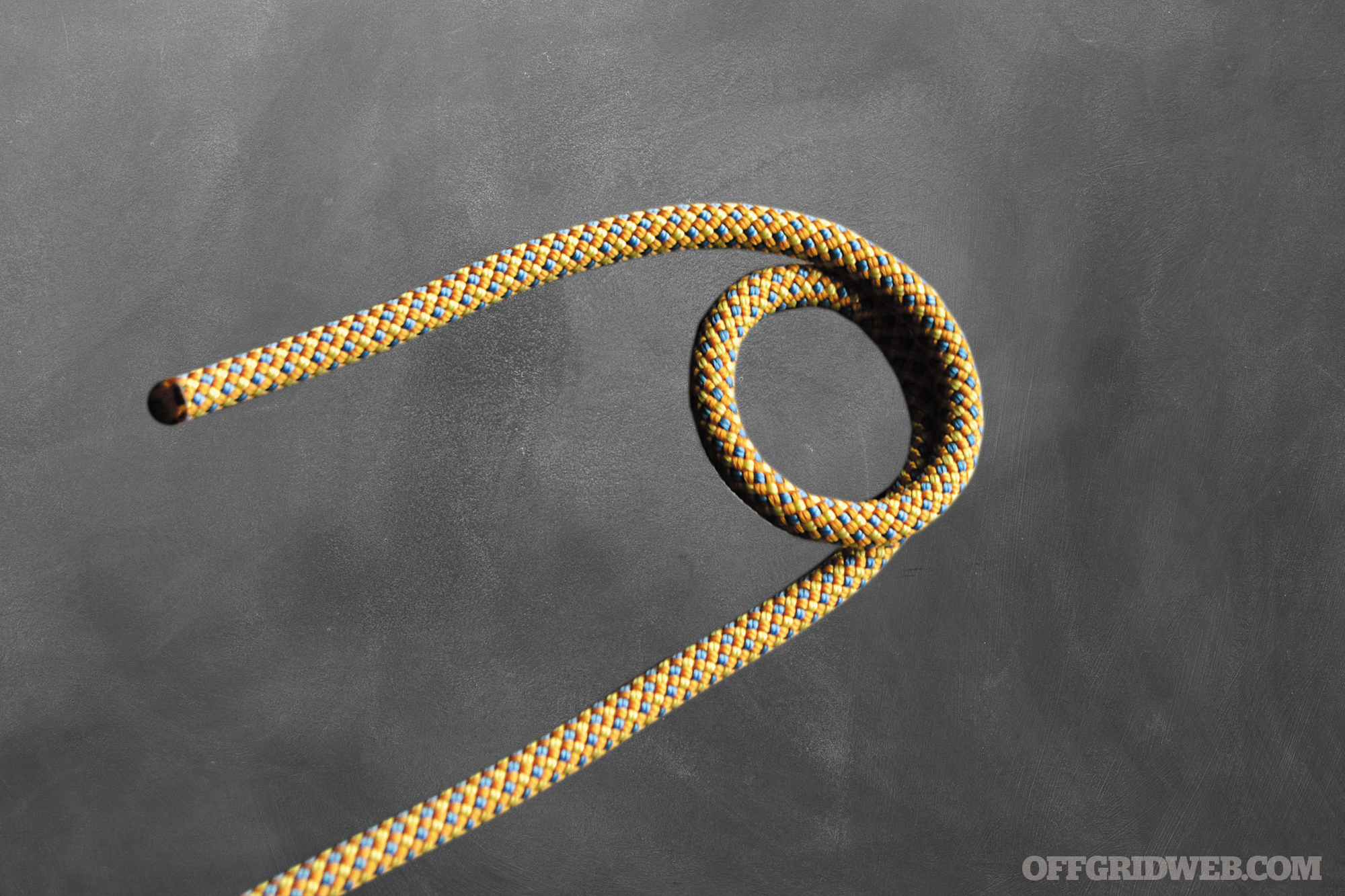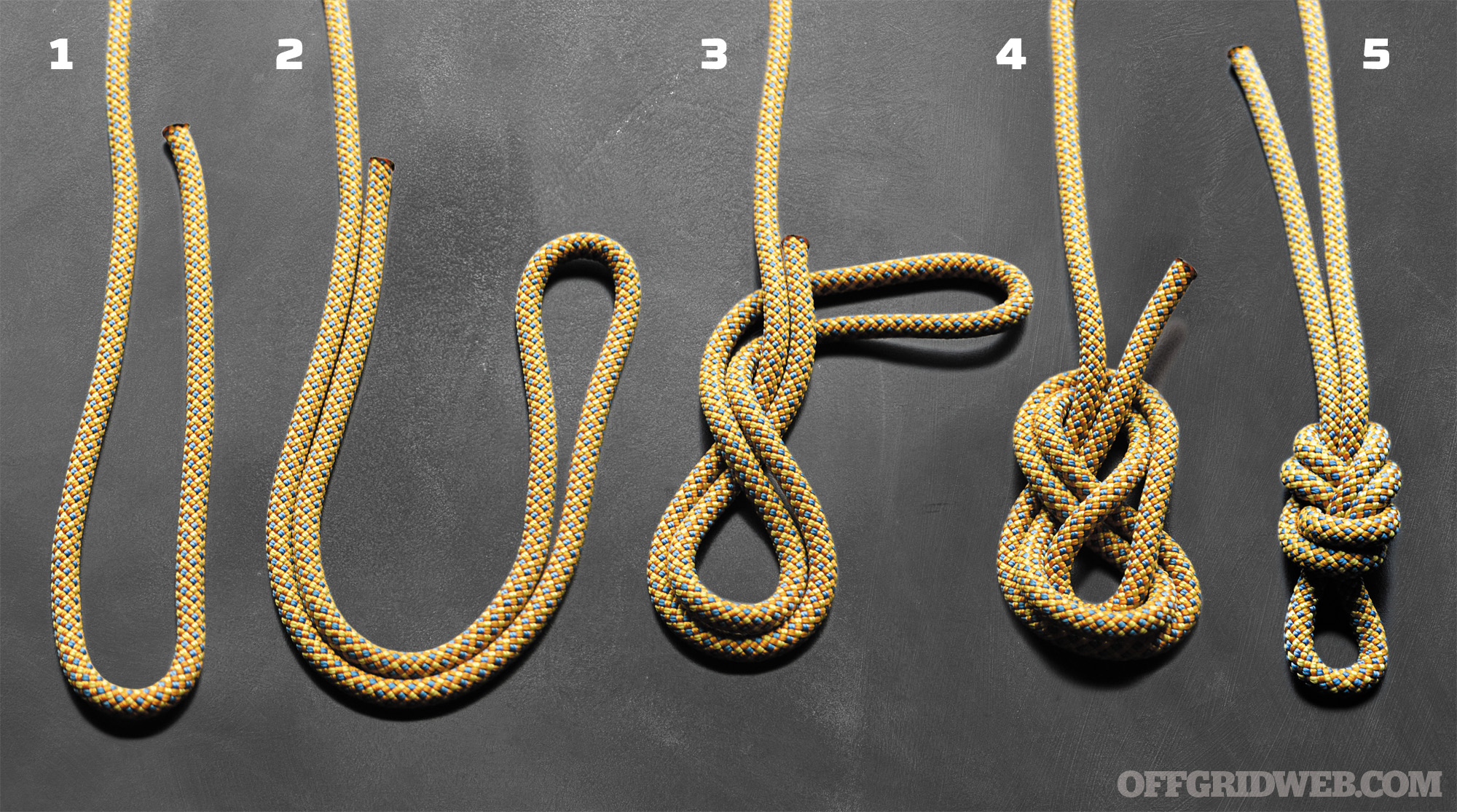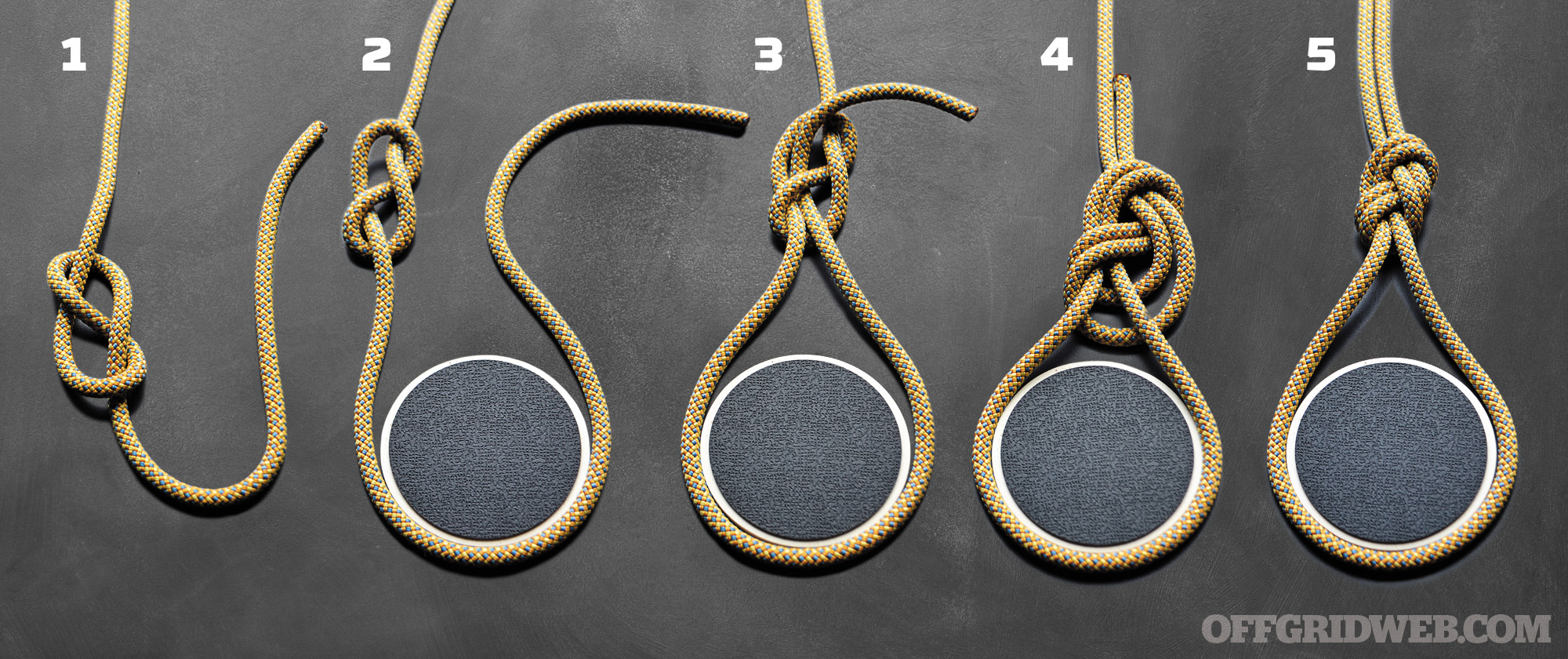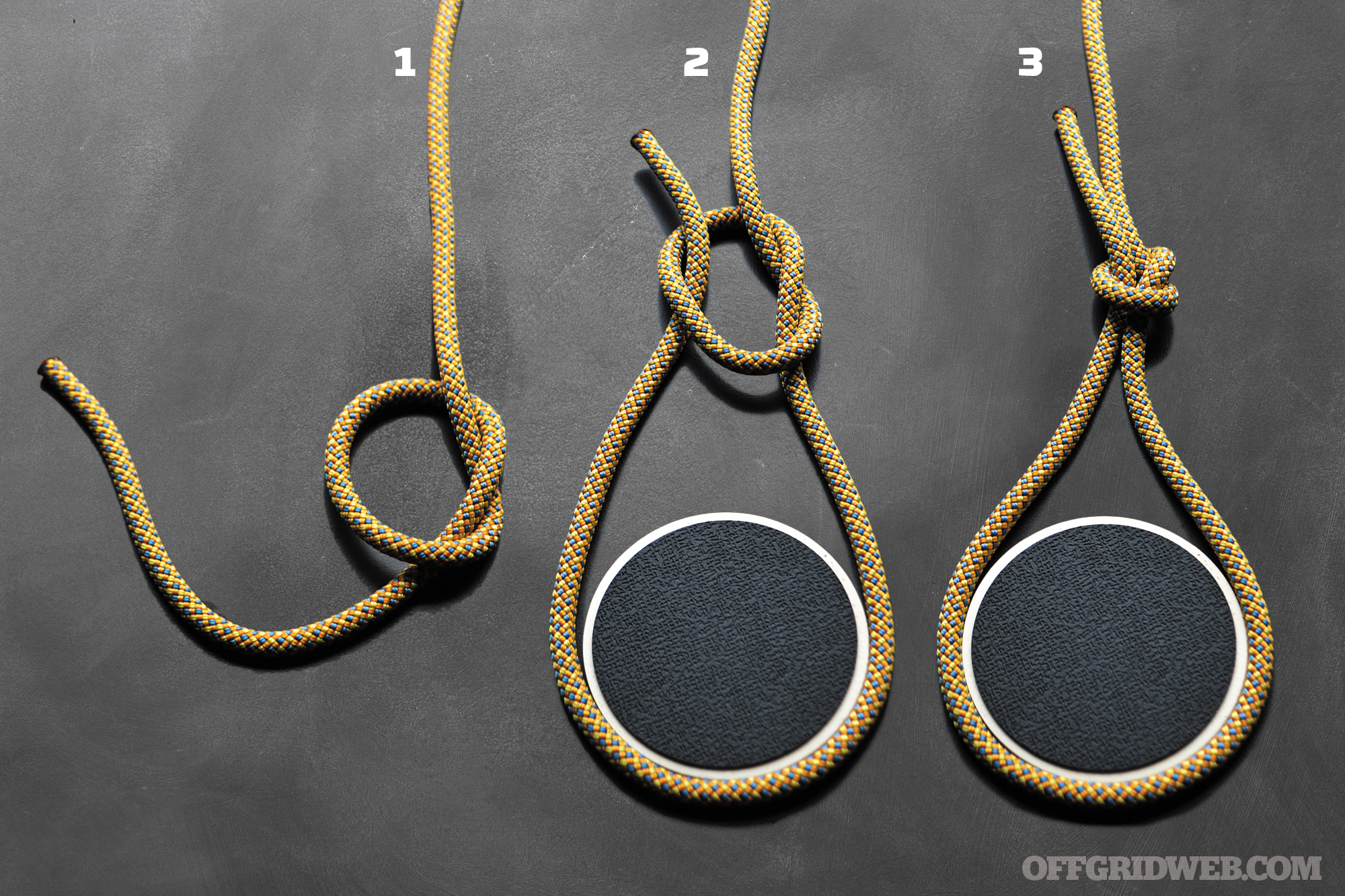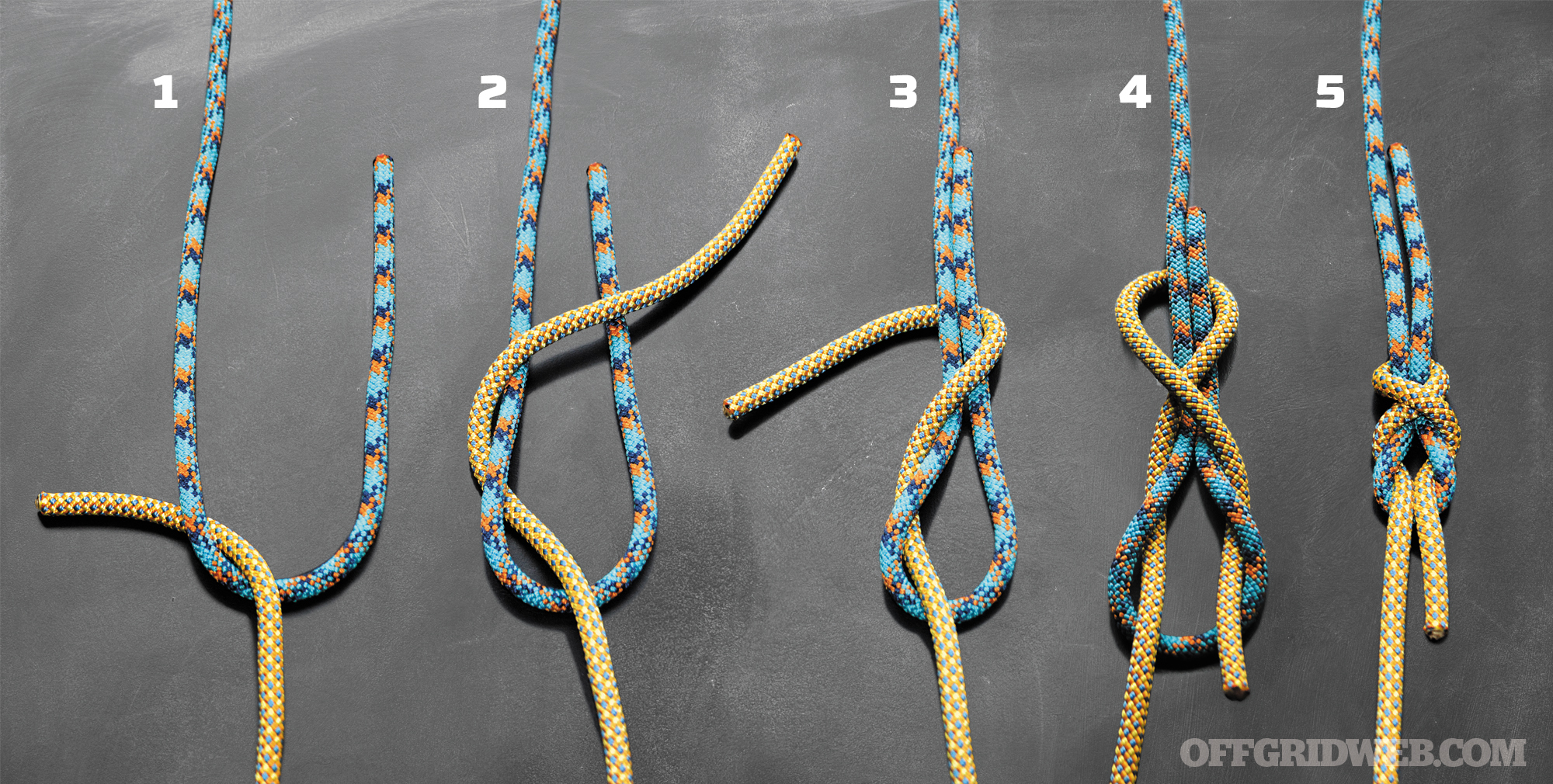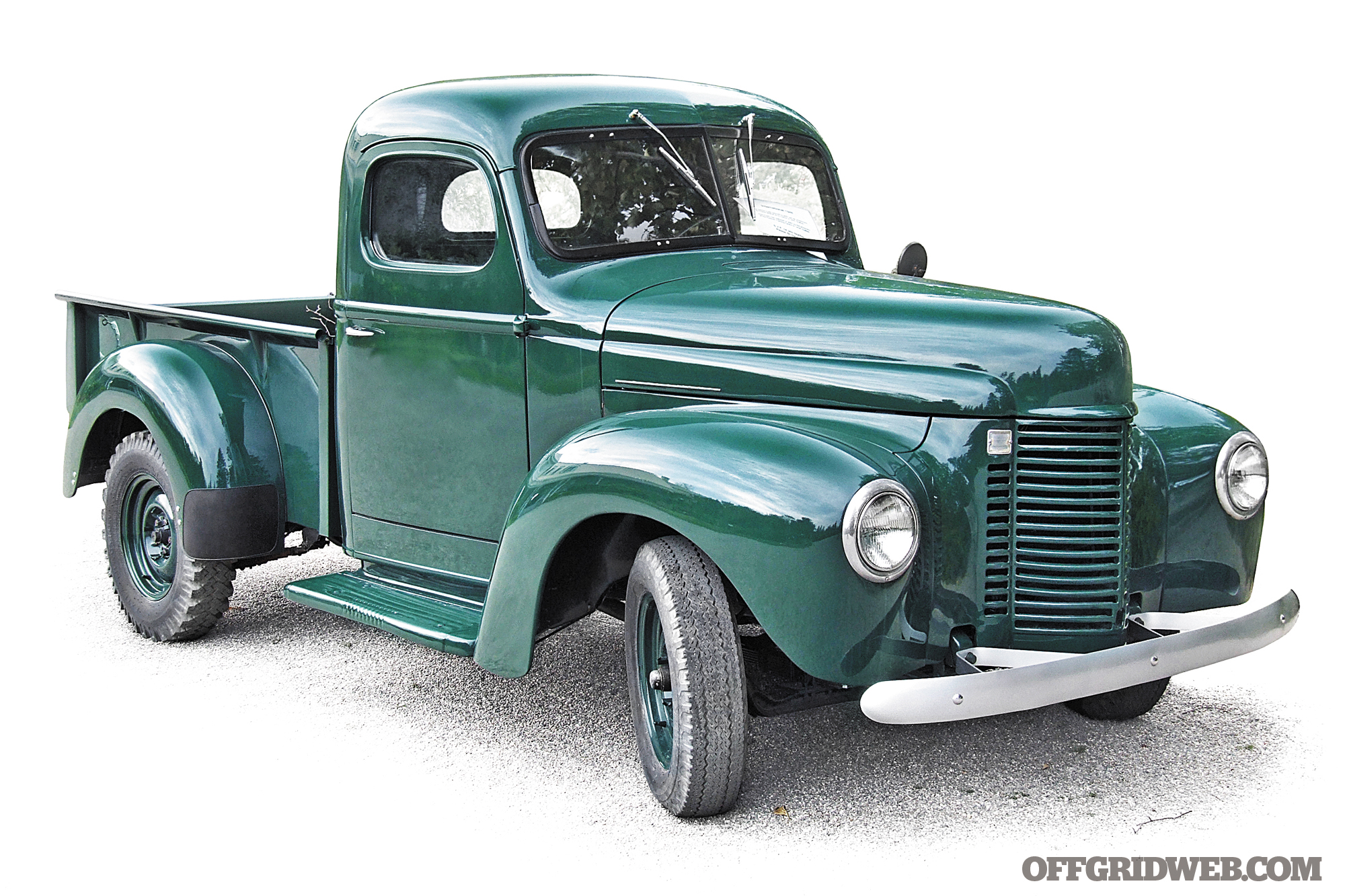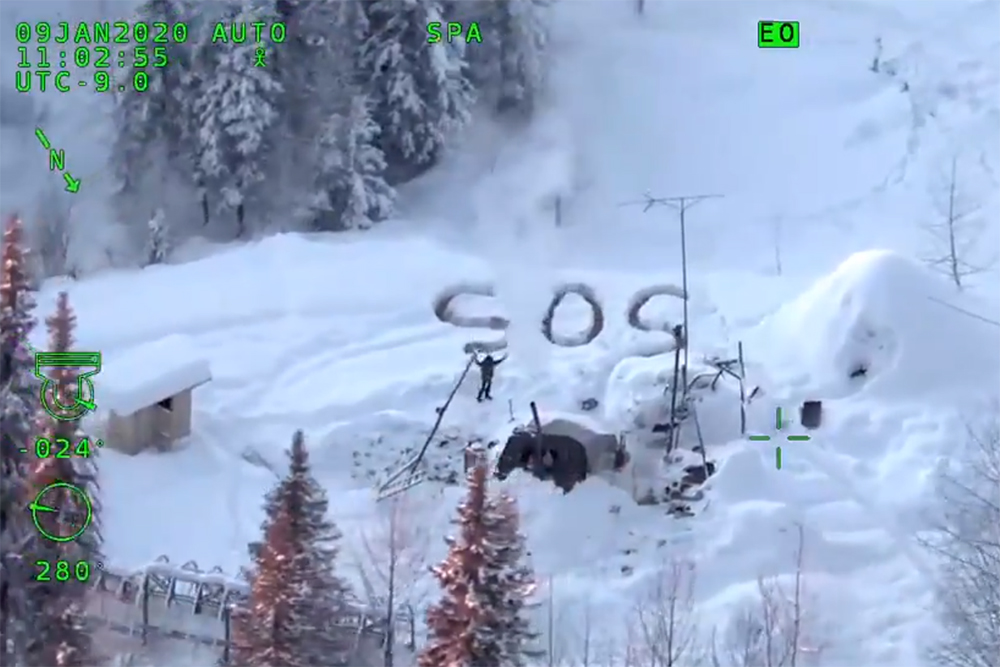Lock picking is a subject that often receives mixed opinions from the general public. Sadly, many see it as a skill set that's only applicable to members of the criminal underworld, and claim that those who learn it must have some kind of underlying nefarious intent. Others perceive it as something that's only possible in spy movies, assuming that the average person would never be able to learn its intricacies. We're here to tell you that these assertions are simply not true — lock picking is an extremely valuable skill with many real-world applications, and it's a lot easier to learn than you might think.
Why Learn Lock Picking?

To address the first point, let's look at a few use cases where knowing how to pick a lock can be valuable to the average person. The most obvious of these is a situation where you're locked out of something you own, whether that's a door, gate, toolbox, or even a vehicle. Maybe you lost the key, left it in an inaccessible location, or locked it inside the container — either way, if you know how to pick a lock, you can solve this problem without paying a locksmith to do it for you. Lock picking is also important for emergency entry and exit techniques, which might be necessary in a survival situation. For example, gaining entry to a locked building to take shelter during a disaster, or in the worst case, covertly escaping captivity during a kidnapping scenario.
Additionally, understanding lock picking is a critical part of hardening your own security systems against those who might employ it for malicious purposes. This plays into the adversarial mindset we've discussed in previous articles. If a bad guy might use lock picks to gain access to your valuables, you'd better learn the skill too so you can know enough to stay one step ahead.
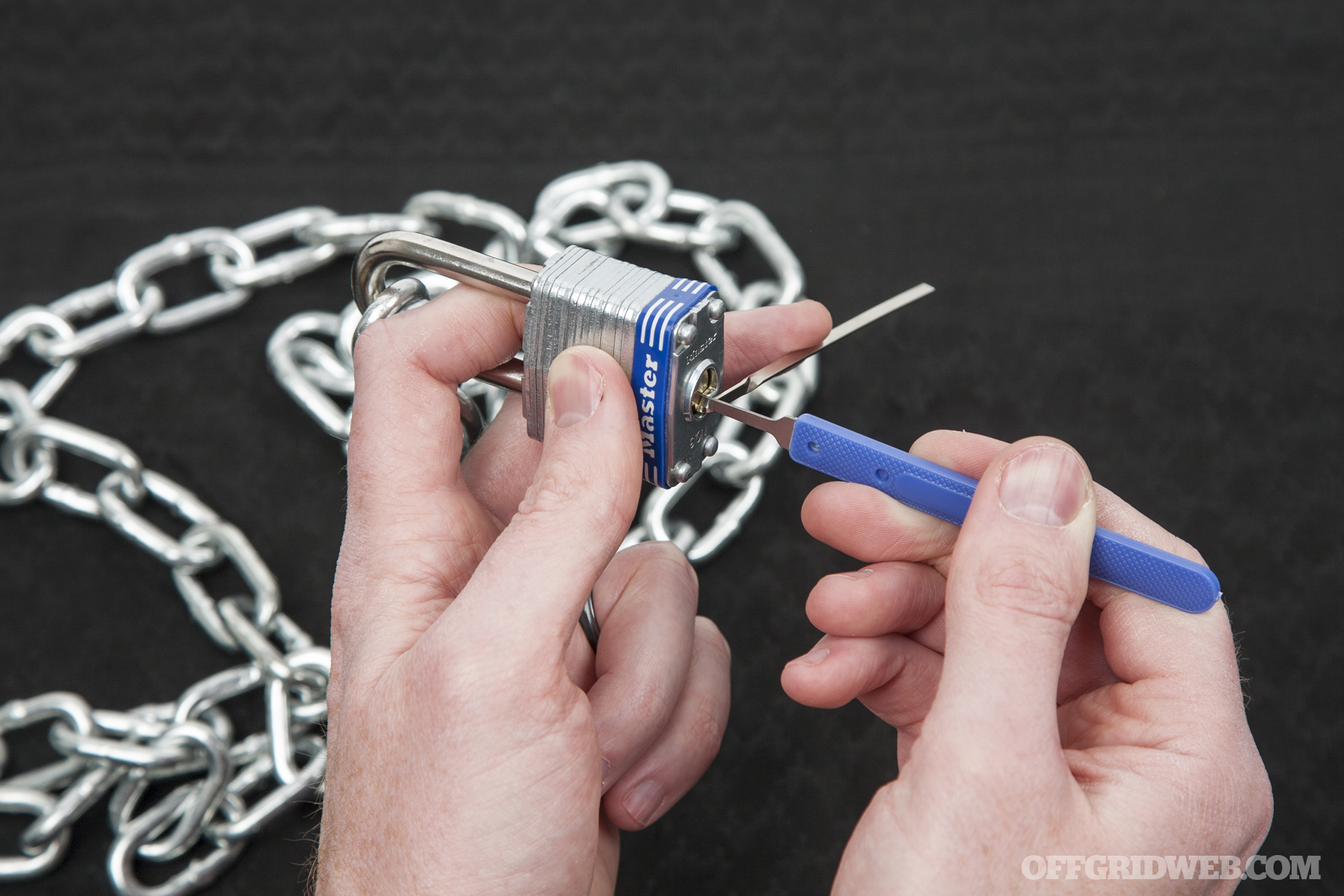
As for the second point, lock picking isn't some esoteric skill that requires years of tireless practice to learn (at least not for most common applications). In fact, it's surprisingly easy to defeat most consumer-grade locks — the kind found in home goods and hardware stores everywhere — within a few seconds. The abundance of educational videos, articles, and training kits available online has made lock picking easier to learn than ever before.
LockPickWorld Beginner Lock Pick Box Set Contents
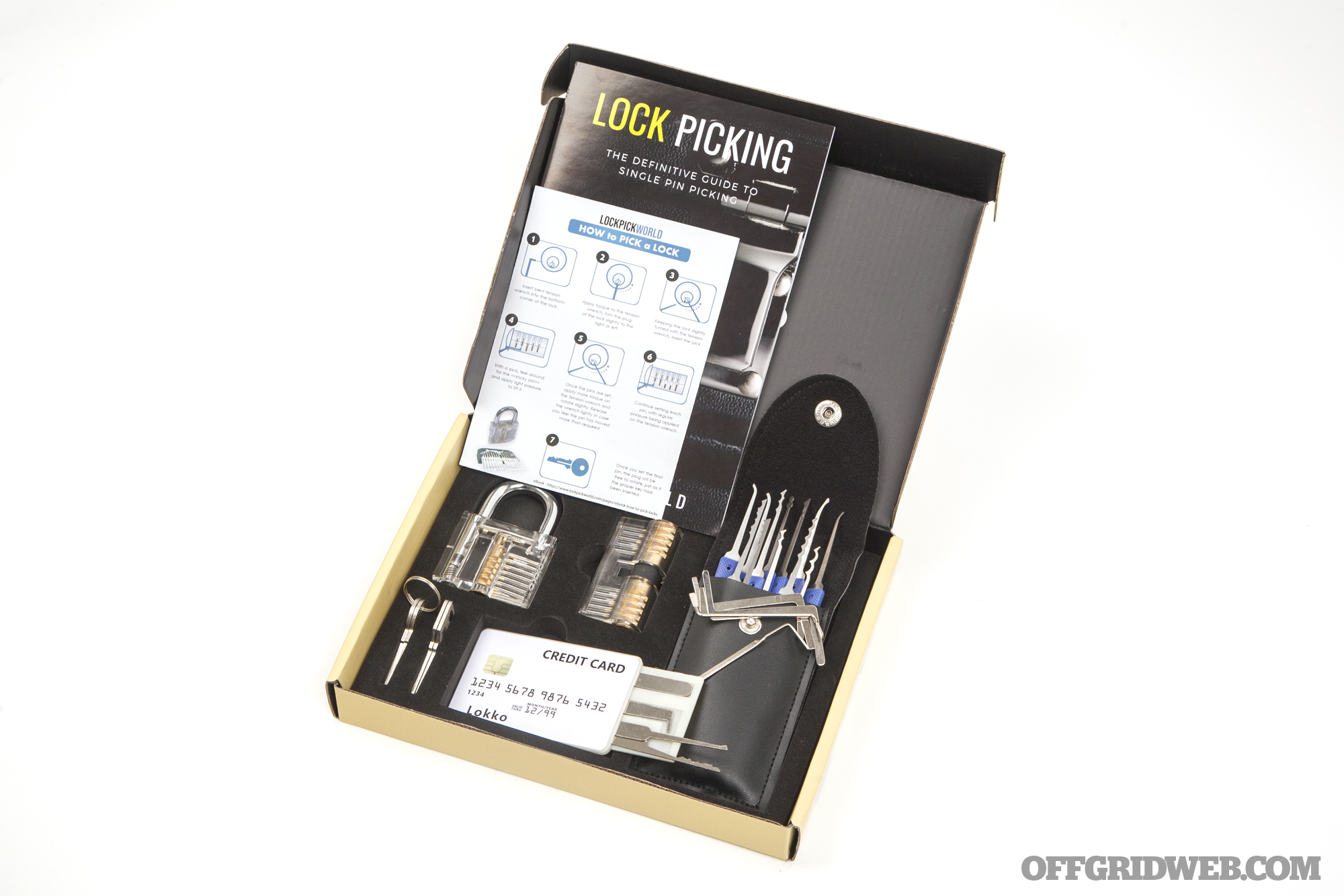
Today, I'll take a detailed look at one such training kit: the LockPickWorld Beginner Lock Pick Set. LockPickWorld was kind enough to send me one of these kits to evaluate, but with a retail price of $53 (plus free shipping) it certainly won't break the bank.
This kit is marketed as an all-in-one starter pack for newcomers to the skill — a perfect description of my own experience level going into this review. It contains the following items:
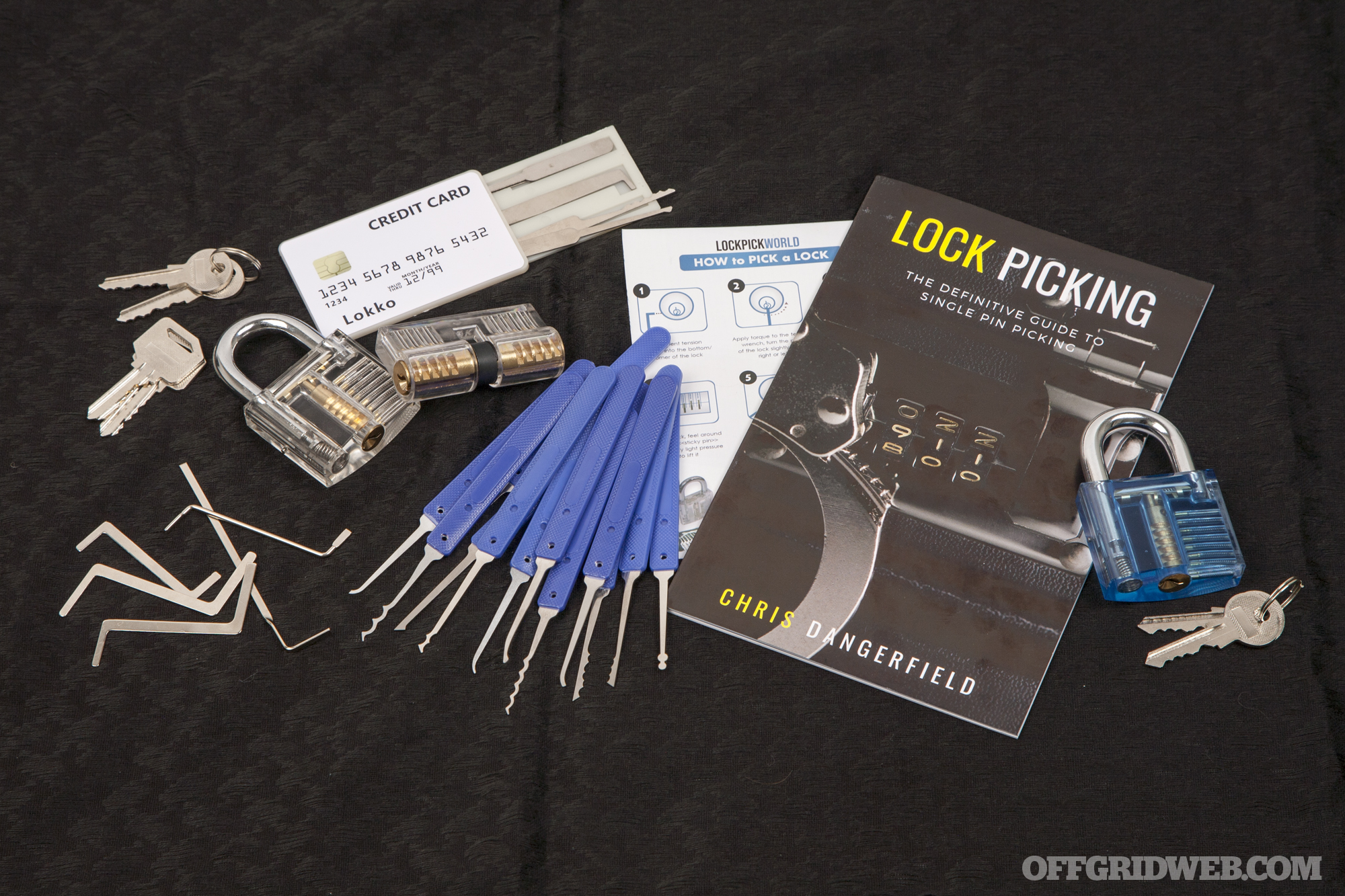
- Lock pick set with a variety pack of picks, tension tools, and an extractor
- “Secret Agent” credit-card-sized pick set
- Clear practice padlock with keys
- Clear practice cutaway training lock with keys
- “How to Pick a Lock” quick-start card
- Lock Picking: The Definitive Guide to Single-Pin Picking by Chris Dangerfield & Mike Gibson
The kit comes standard with the last item in the form of a 40-page downloadable ebook for a total price of $48. However, I selected the upgraded version of the kit, which includes the guide in paperback form. This adds $5 to the price of the kit, and I'd say it's well worth the additional money to have a physical book to study and keep on hand.
I also added an additional blue Medium Difficulty practice lock ($18, pictured above at far right) which ups the ante for practice in the future. I'll discuss this item more later.
The Definitive Guide Book
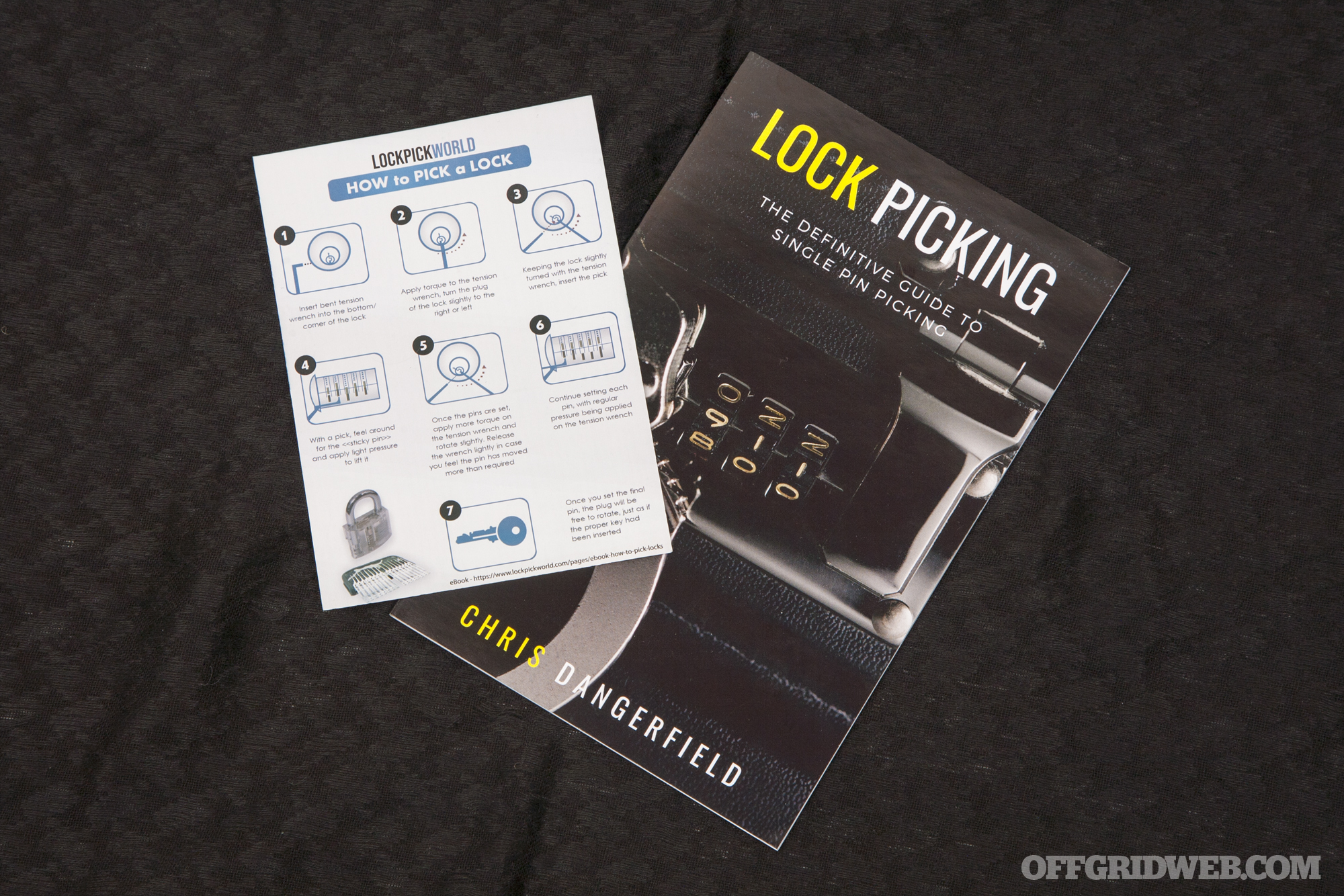
Despite my impulsive instincts, I knew that it'd be a wise choice to study the fundamentals before I started experimenting with the picks and practice lock. So, I read the book cover-to-cover right away. With only 34 printed pages, clearly-defined sections, and many photos and colorful diagrams, it was easy to digest. The content, which was written by Mike Gibson and edited by LockPickWorld director Chris Dangerfield, was generally well-articulated and simple to understand. I spotted a few typos, but these didn't detract from the value of the guide.
It's bold to call any 34-page document a “definitive guide” to a subject as complex as lock picking, but I'd say this book does a pretty good job of covering the key points (forgive the pun). It's broken into two parts, which I'll analyze briefly below. Note that this is a quick summary — the guide offers far more detail, tips, and tricks.
Part 1: How a Cylinder Pin Lock Works

This is said to be the most important part of the book, and understandably so. If you don't comprehend how a lock mechanism works, you won't be able to pick anything, much less troubleshoot problems that crop up. The components are described and depicted in detail, but we'll cover the basics below so you'll be familiar with terms used later in this review.
- Shell — the body of the lock
- Plug — the rotating cylinder where the key goes
- Pin chambers — shafts that are drilled through the shell and plug, containing the pins
- Key pins — these occupy the lower part of the pin chambers, and are the parts that contact the key (or pick)
- Driver pins — these occupy the upper part of the chambers, and block the shear line between shell and plug, keeping the cylinder from rotating unless they're aligned correctly
- Springs — add tension to the pins, preventing them from rattling within the lock
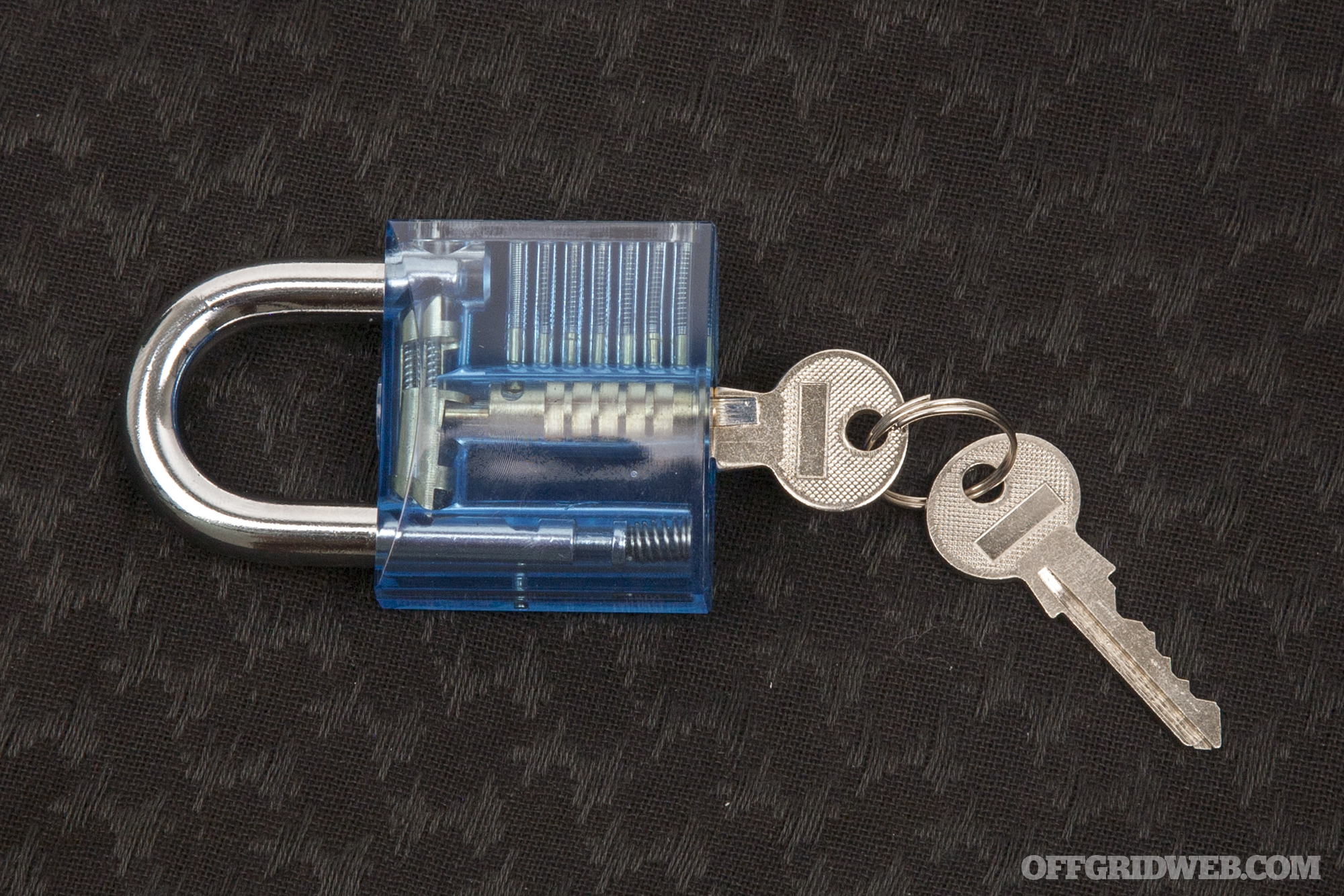
Notice how inserting the correct key into a clear lock aligns all the pins — this is your goal.
The guide then shows how the key lines up the driver pins at the shear line, allowing the cylinder to rotate and open the lock. It also discusses machining tolerances — slight variances in the pin diameters that can cause some pins to bind and get stuck in the chambers while others move freely. Pin states are also discussed, such as set (lined up at the shear line), over-set (too high, with key pins above the shear line), and under-set (too low, with driver pins below the shear line).
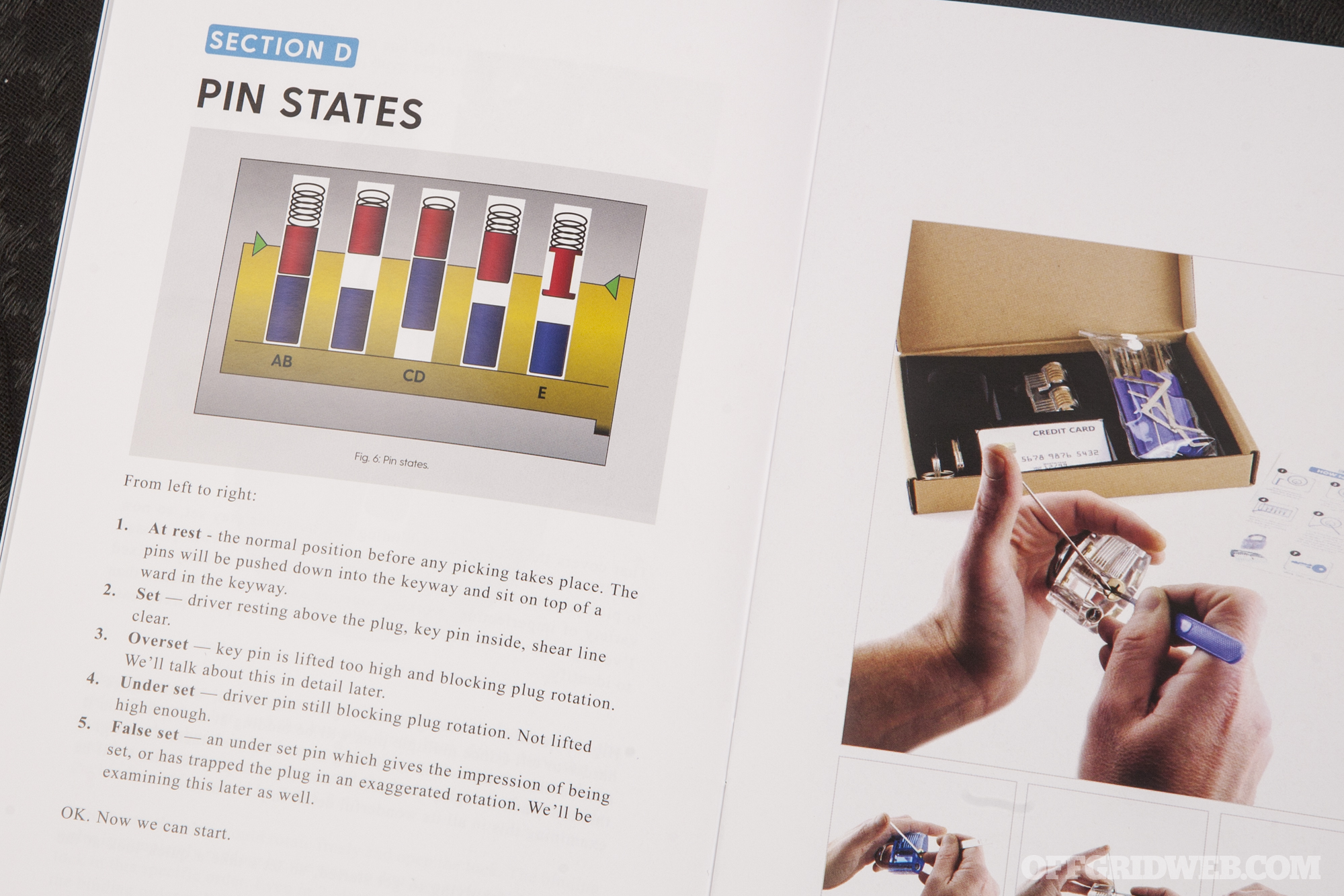
Diagrams clearly depict various pin states that can occur inside the lock.
Part 2: Picking Techniques
Once the theory portion was out of the way, I moved on to the meat of the guide. First, the author explains how to hold picks and tension wrenches, and includes photos demonstrating each method. Essentially, a lot of it comes down to personal preference, but the author recommends the following basic technique:
- Insert a tension wrench into the bottom of the keyway, taking up as little space as possible inside the mechanism. Hold the lock in the non-dominant hand and apply “a medium amount of tension” with one finger — roughly the amount needed to press a key on a computer keyboard.
- Start with a short hook pick, and insert it into the keyway at an upward angle. Slowly draw the pick back and forth across the pins to find the first binding (stuck) pin.
- Apply pressure with the pick and back off tension on the plug until the binding pin moves. Once you feel the pin is set, move on to the next binding pin.
- Continue the process until the final pin is set and the plug turns to open the lock.
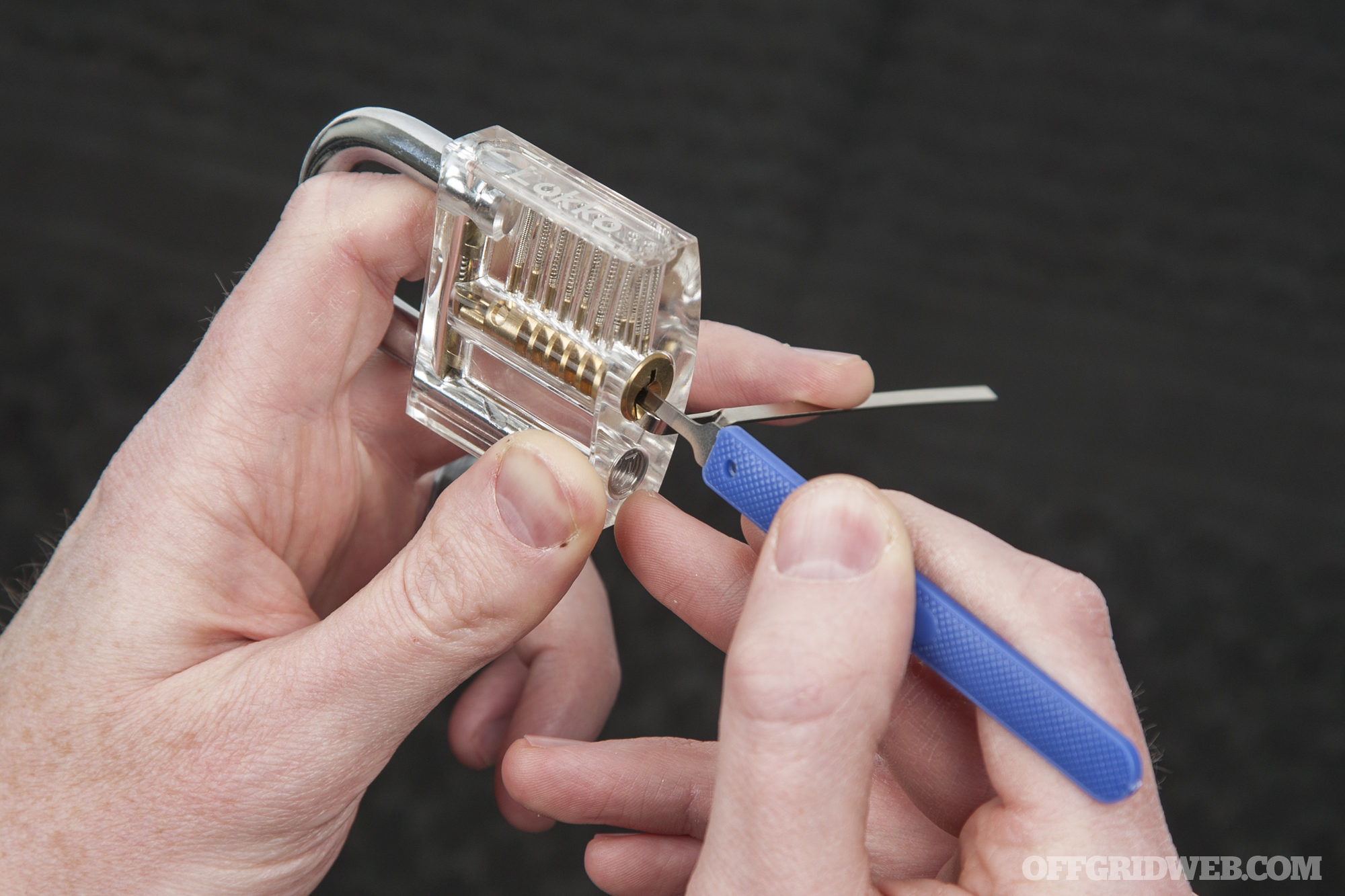
If you've never picked a lock, this probably sounds extremely complicated, but the author provides reassurances that you'll get the hang of it quickly. He then describes one of the most common problems — over-setting one or more pins by pushing it too far upward — as well as potential solutions. The guide concludes with a reminder to focus on the Three P's: Practice, Patience, and Persistence.
The Tools
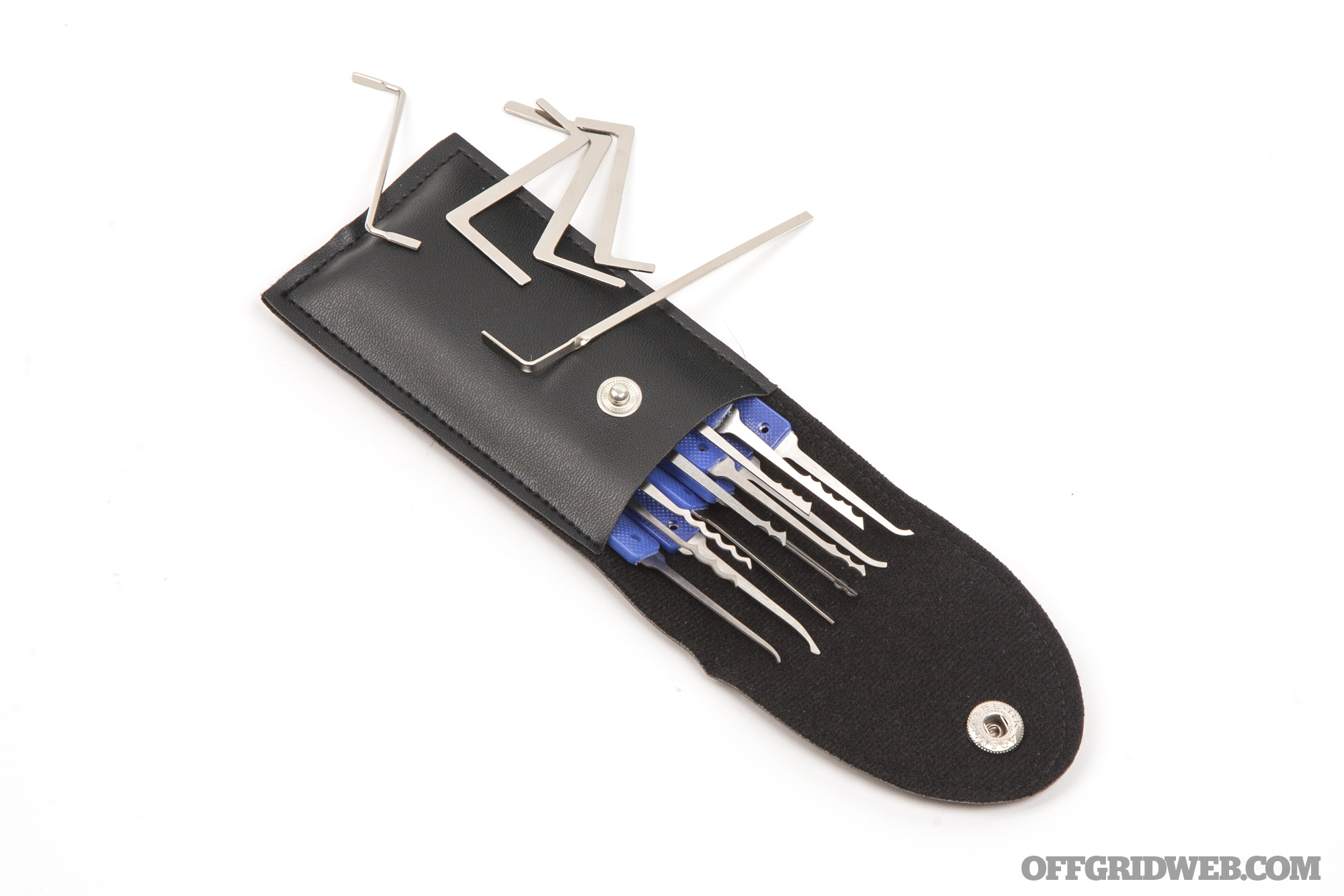
After reading the book, I set out all the tools in the LockPickWorld box. The faux leather pouch contains five L-shaped tension tools, plus eleven picks and one extractor with blue plastic overmolded handles. I recognized a few of these as the hook-style picks described in the guide book, but all of the tools are unlabeled, and the other styles are not mentioned in any of the documentation.
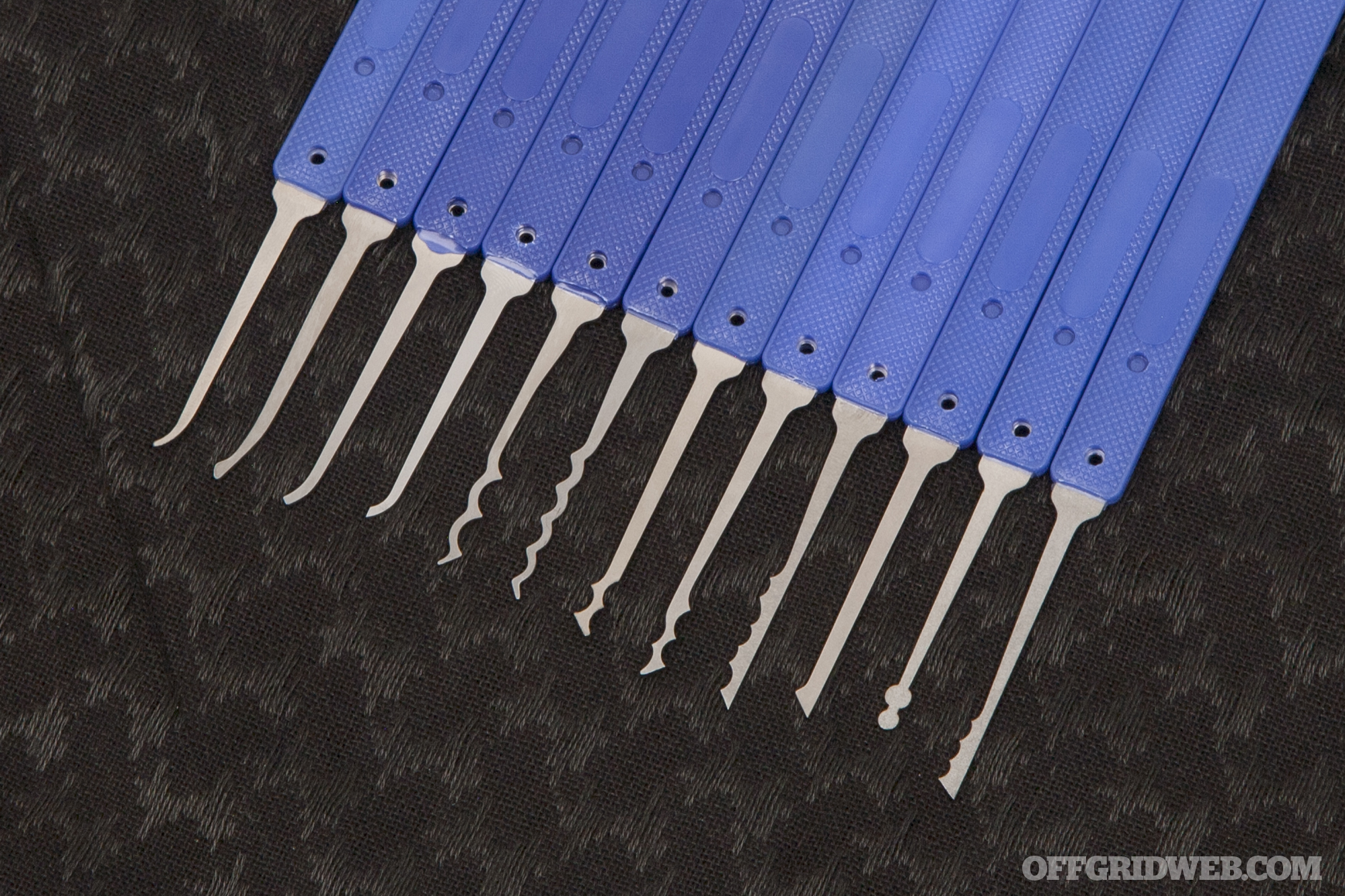
After reading up on lock pick types elsewhere, I determined that there appear to be four hook variants, four zigzag-shaped rake/snake picks, one single-sided long rake, one half diamond, and one double-ball “snowman” pick (all pictured from left to right above). The final tool looks like a second rake, but is actually an extractor that's designed to remove a broken key stuck inside a lock.
Although it's nice that the kit includes all these items, it's frustrating that their names and purposes were not described in the guide. Based on what the guide covers, I immediately selected one long hook pick and a tension wrench, and put the other tools back in the case. As a beginner, the more-specialized tools strike me as a source of confusion rather than assistance.
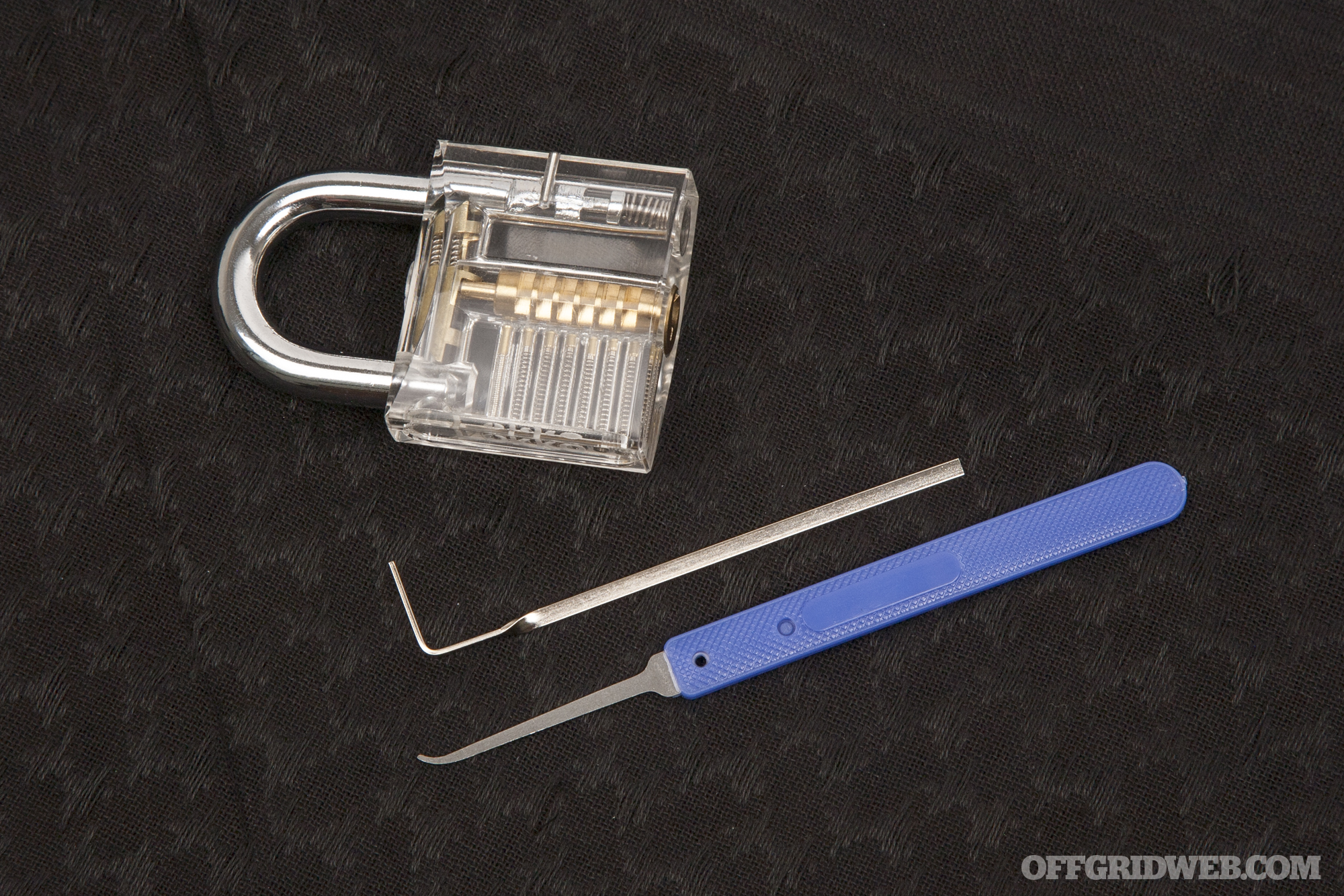
To begin, you'll need a hook pick and a tension wrench — I chose these two.
Thankfully, both of the included clear locks offer ideal conditions for practice. The transparent plastic shells on these locks make it easy to see each of the pins as it moves, and to catch mistakes such as over-setting pins, or contacting multiple pins with the pick shaft rather than a single pin with the tip. The 6-pin padlock works exactly like you'd expect, and the cutaway lock is double-sided with two different 5-pin configurations, yielding a total of three unique locks to pick.
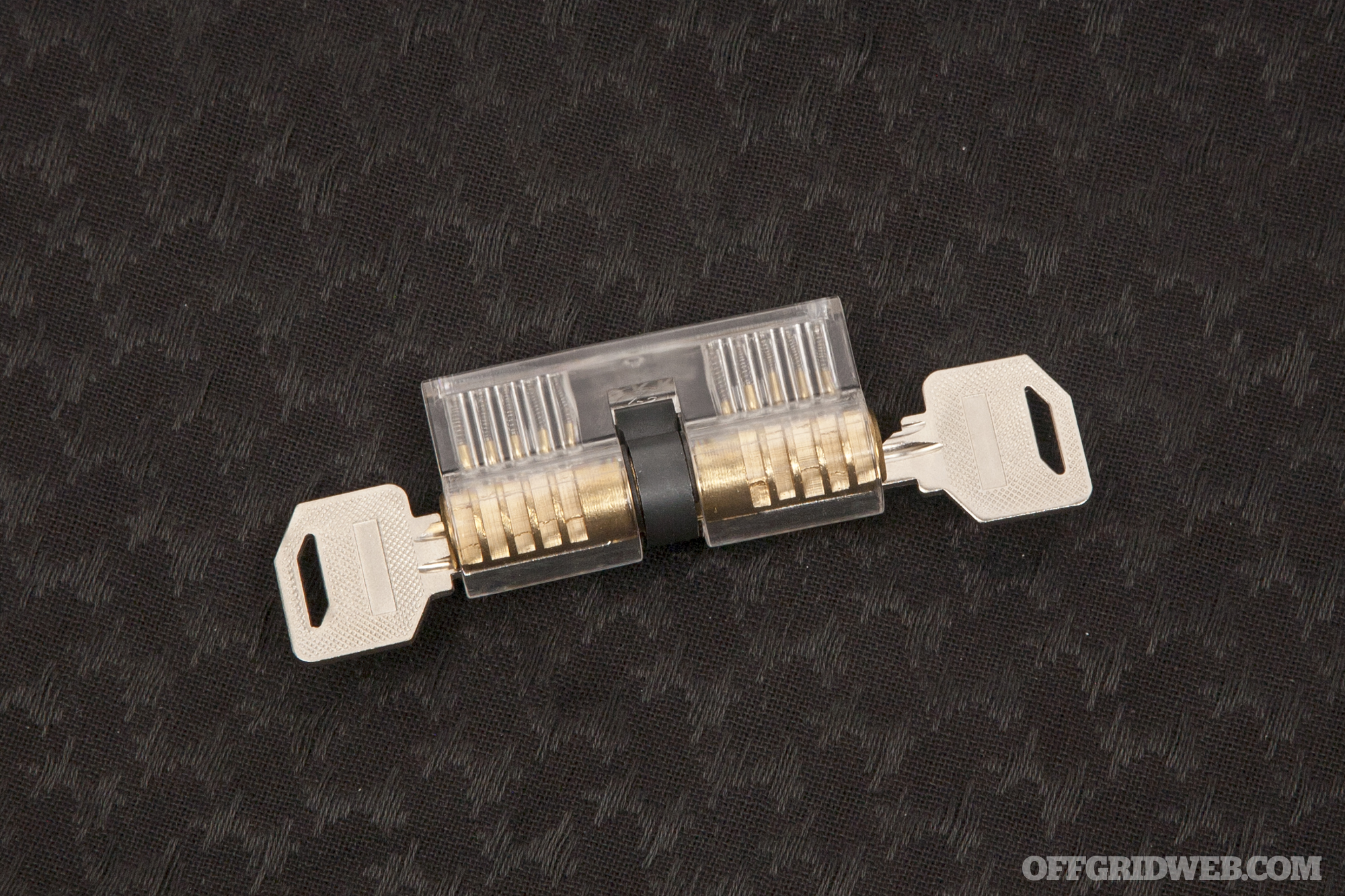
The cutaway lock is similar to a typical door lock, but with two different pin arrangements.
Finally, there's a slim plastic case that contains the “Secret Agent” pick set: a double-sided tension wrench and four stamped metal picks (stretched snake, long hook, half diamond, and long rake). Again, three of these four are styles that weren't covered in the guide. The plastic case features a sticker on the front that loosely resembles a credit card, but this definitely won't fool anyone. If I chose to carry any of these items, I'd slide the tension wrench and one or two picks into a wallet and leave the rest of the kit at home.
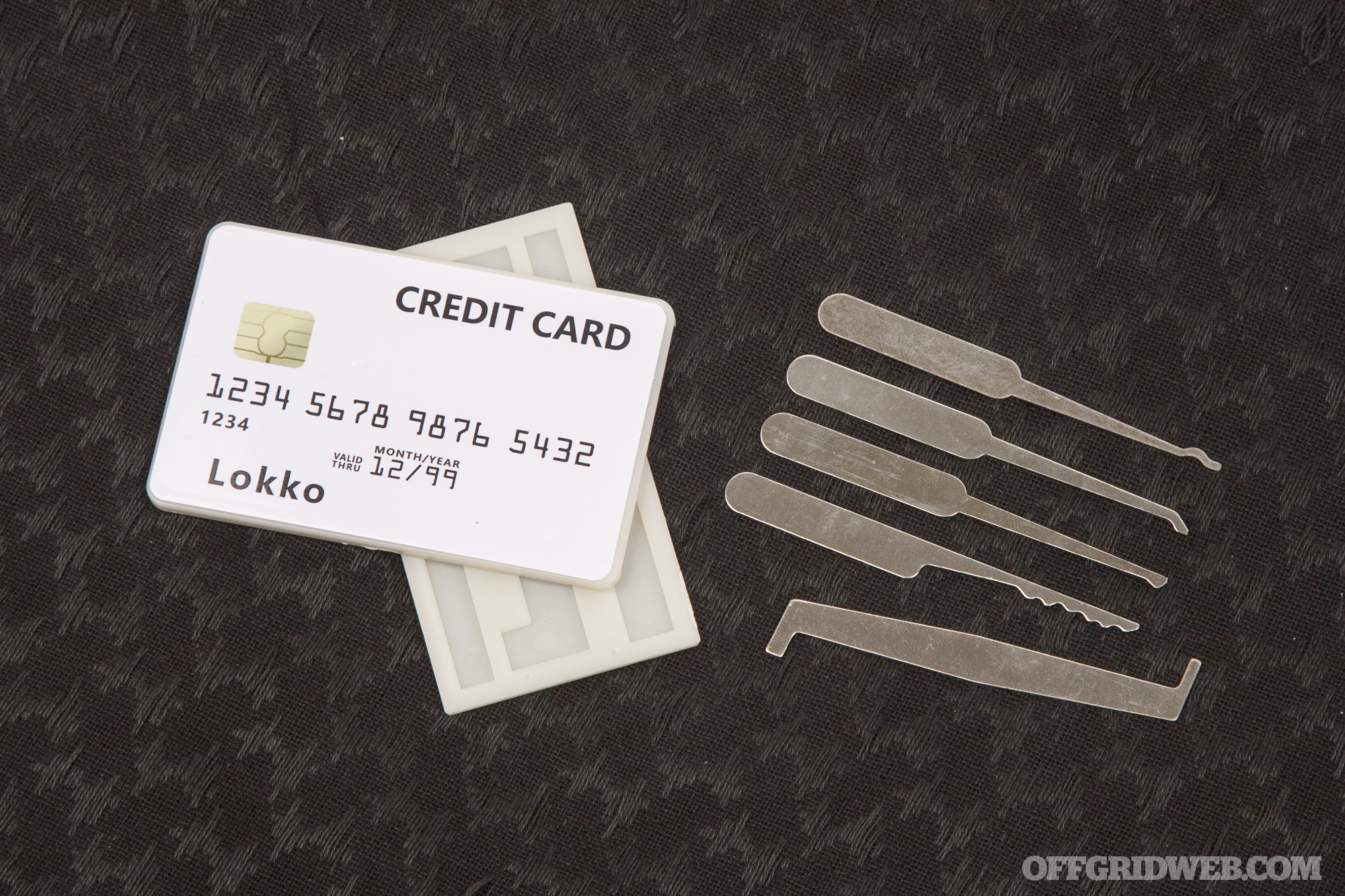
Optional Add-On: Medium Difficulty Practice Lock
The clear locks included with the kit were fairly easy to defeat after a little practice, so I also picked up a Stage 2 Medium Difficulty Training Padlock from LockPickWorld ($18). Its bluish clear shell contains six pins like the clear Easy Difficulty padlock. However, two of these pins are spool pins, with an I-shaped side profile that makes them more challenging to set correctly.
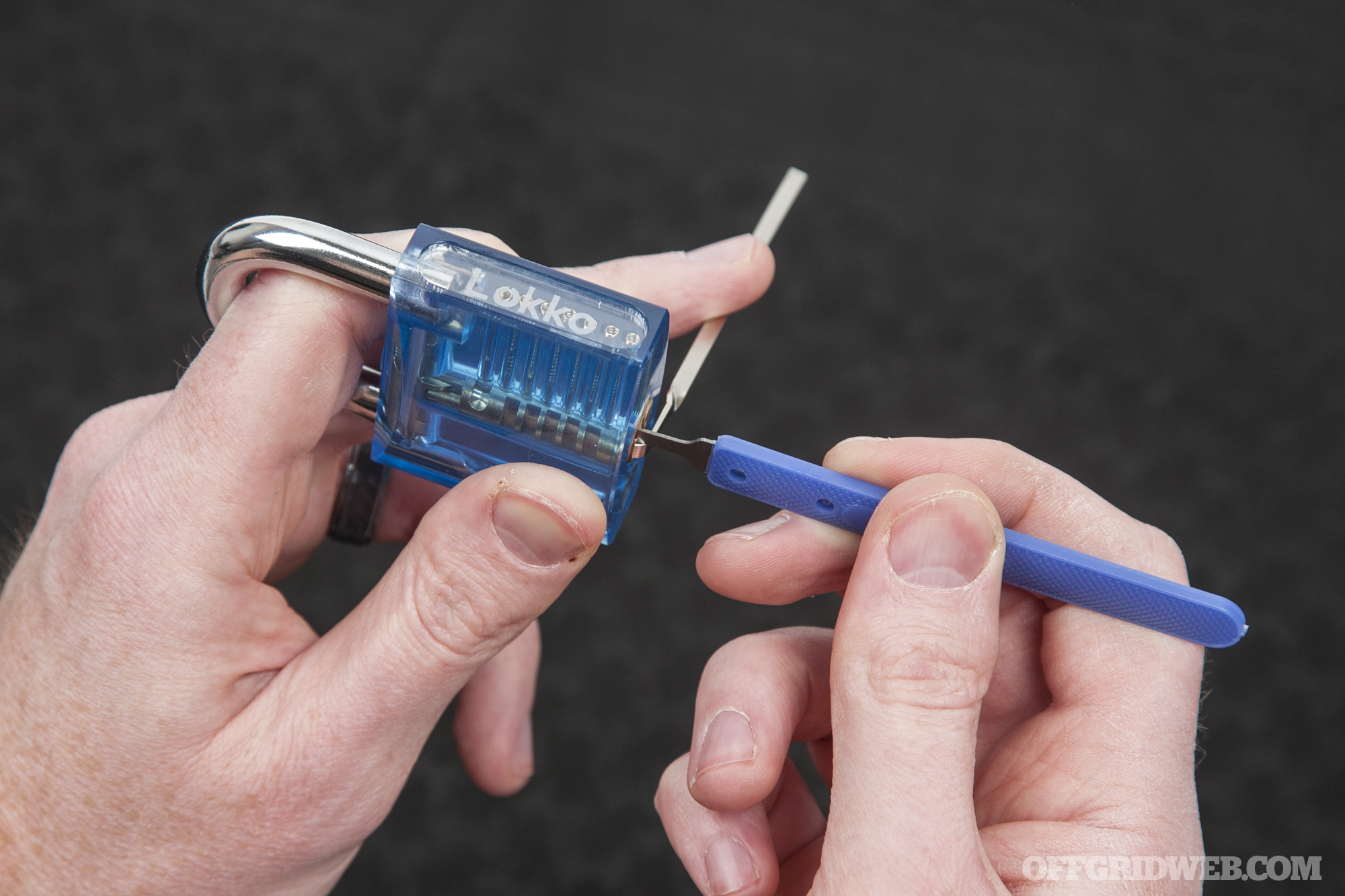
With a little practice and some help from this BosnianBill video, I was able to learn to work around these spool pins and open the Medium Difficulty lock somewhat consistently. However, real locks aren't transparent, and doing it without looking at the pins is the true challenge — that will take a lot more time to master.
Conclusions
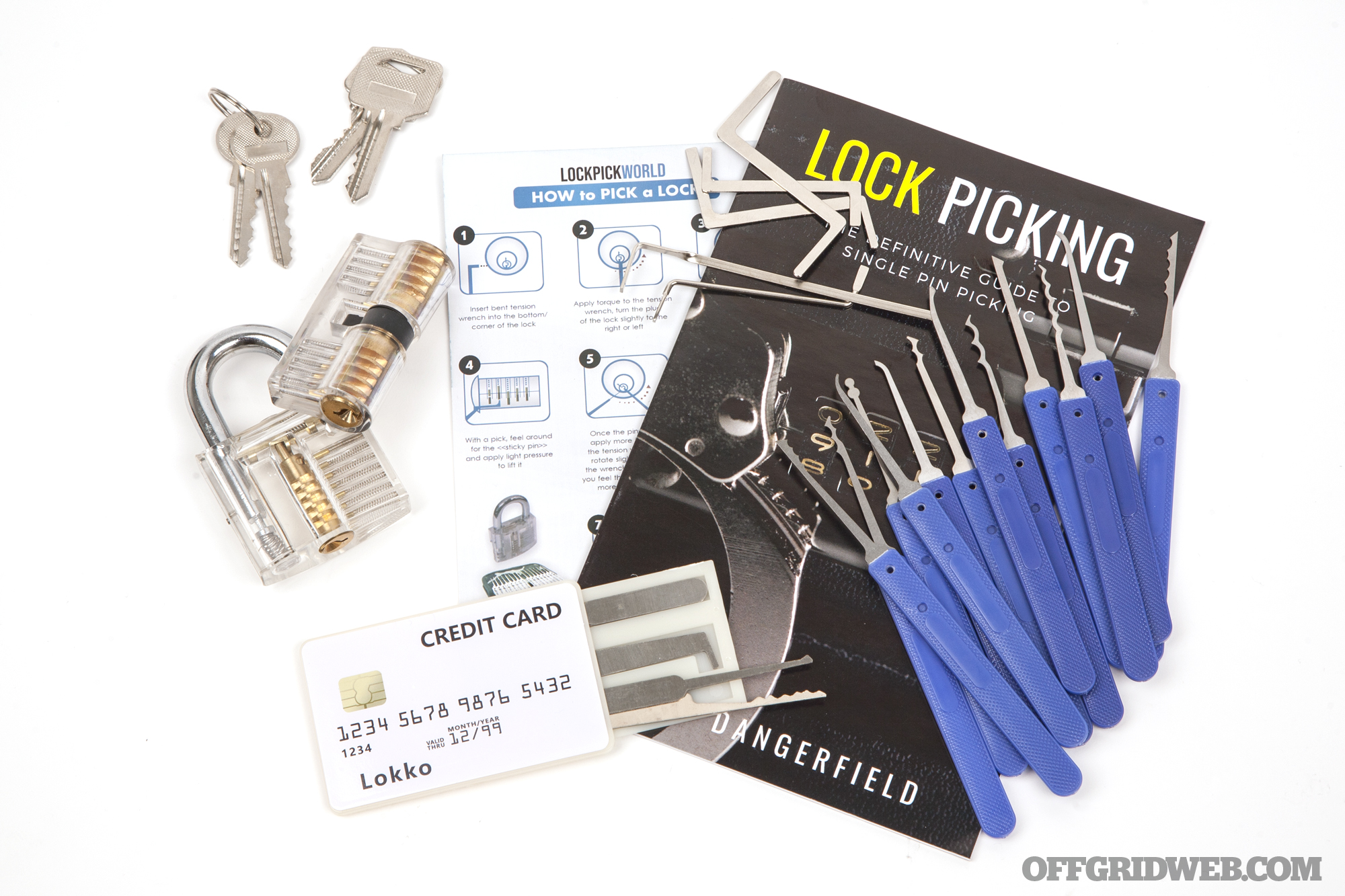
As a first-time introduction into lock picking, the LockPickWorld Beginner Lock Pick Set has some ups and downs (again, forgive the pun). The guide book is easy to read and quickly conveyed the fundamentals of lock mechanisms and picking. I also appreciated the quick-start guide, which condenses the process into seven basic steps. The clear locks were simple to use, and offered an excellent training aid comparable to standard-fare hardware store locks.

Compared to the 6-pin clear lock (silver key), opening a basic 4-pin Master Lock (gold key) was child's play.
The pick set included the basic tools I needed, but lumped them in with an array of other tools that don't seem very relevant to a beginner's learning process. The lack of documentation on the pick set left me wondering what they're called, much less why or how they might be used. The user can certainly experiment with them in the clear practice locks, but this must be done without any guidance. In this case, I would have preferred two or three high-quality picks with a few sentences explaining their uses, as opposed to a variety-pack of twelve entry-level picks that only serve to confuse a novice.
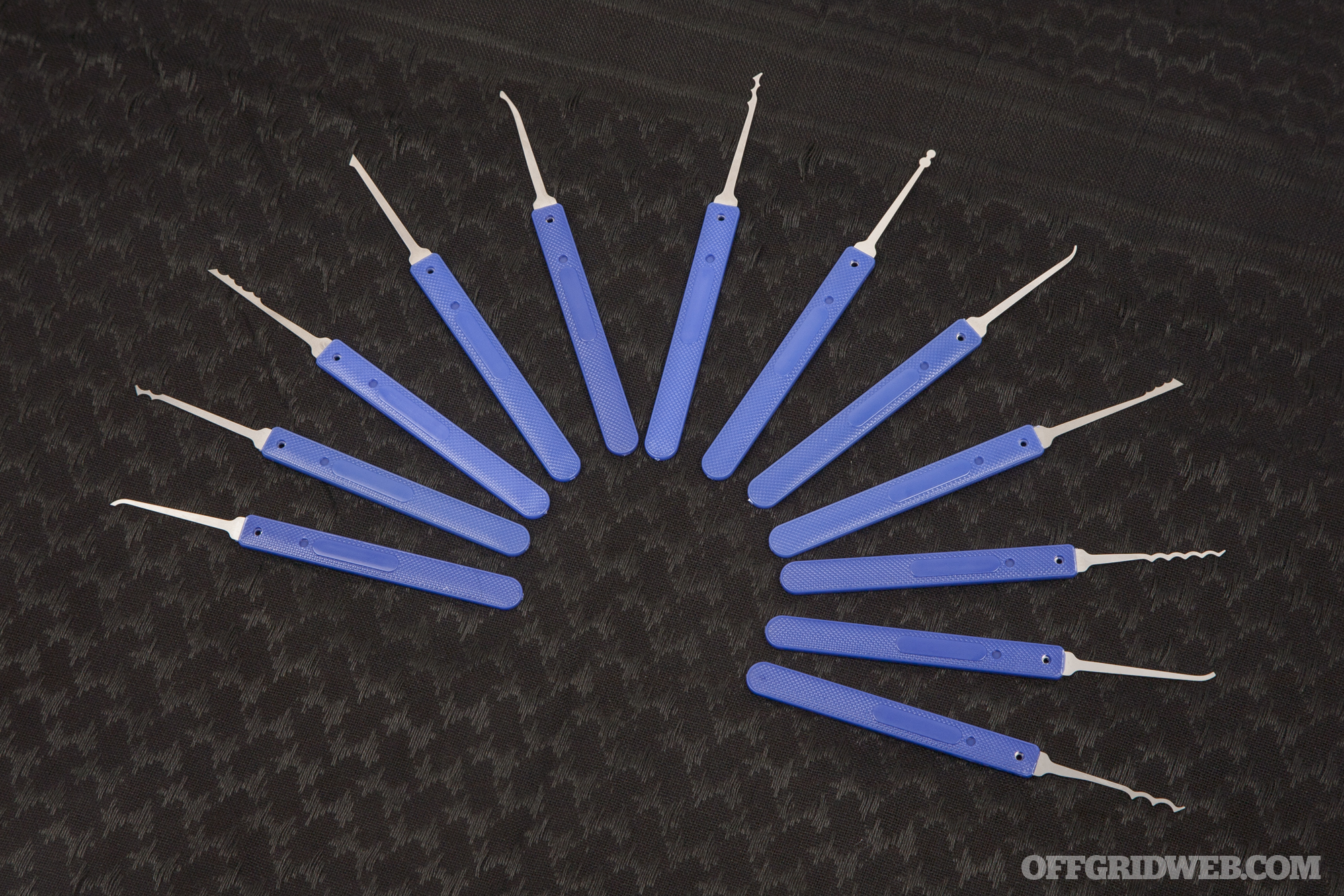
Pick variety is great, but too much at once can overwhelm a novice. I'll take quality over quantity any day.
The “Secret Agent” pick set seems mostly like a novelty item, with an unconvincing plastic “credit card” case and thin stamped metal picks. Still, if you're planning to use lock picks in the real world, you'll probably want a concealable set for every-day carry (LockPickWorld offers many to choose from). Although I plan to upgrade to a higher-quality EDC set in the future, this kit at least allows me to get a feel for using smaller picks.
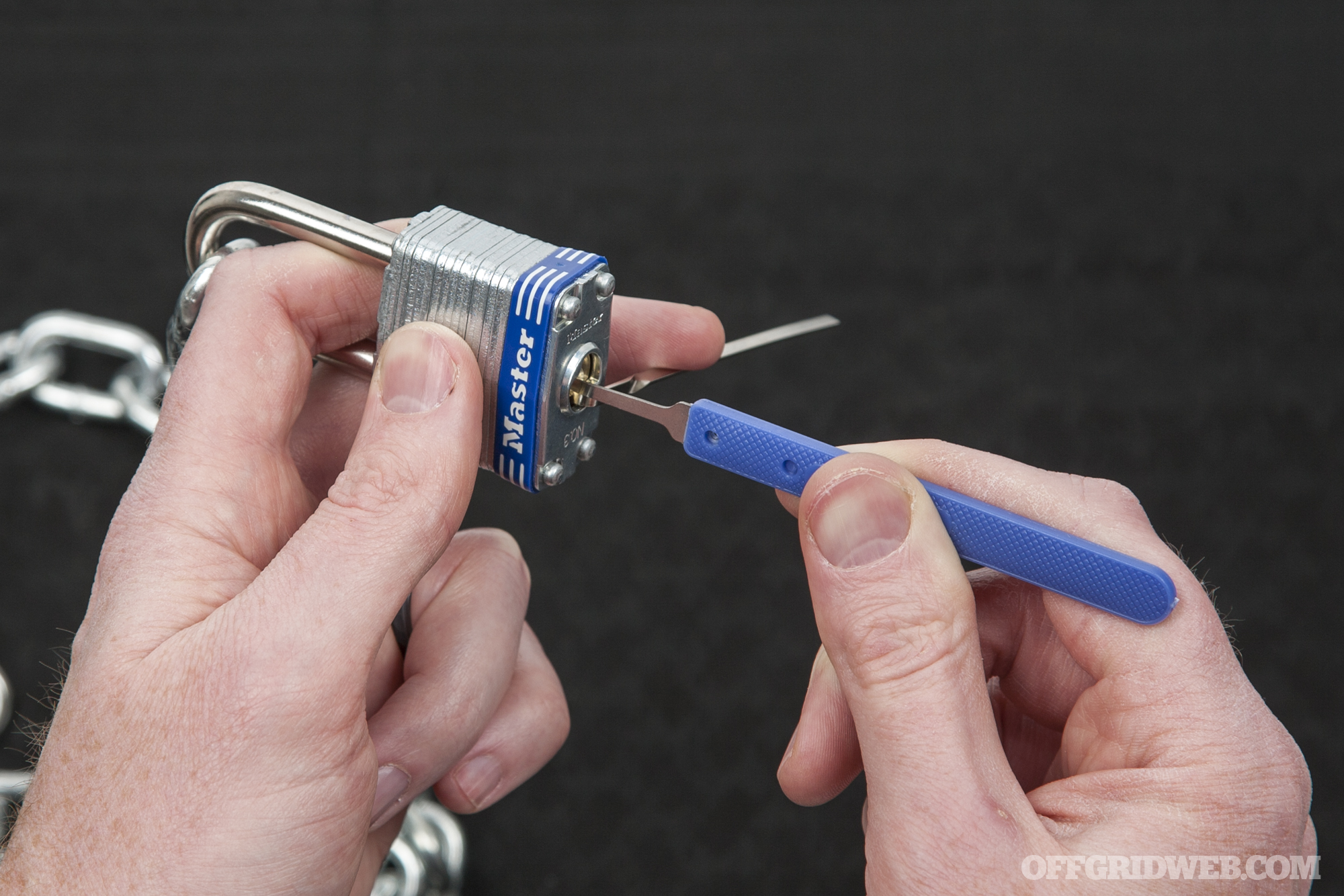
Above: After some practice with the clear locks, I was able to open this Master Lock No.3 in seconds. Other locks I own, such as an ABUS Titalium padlock, posed a much greater challenge as a result of security pins and tighter tolerances. Learning how to pick locks will make you more aware of these differences, and how some locks offer far more physical security than others.
Overall, the LockPickWorld Beginner Lock Pick Set is a solid starting point for beginners. While I felt that the tool kit could've benefited from a less-is-more approach, having too many tools is still preferable to having too few. With the addition of a Medium Difficulty padlock, it could also appeal to intermediate users who might be more familiar with the other pick types. Given the $53 price tag, this box set offers good value as well. For more information on this and other LockPickWorld tools, go to LockPickWorld.com.

